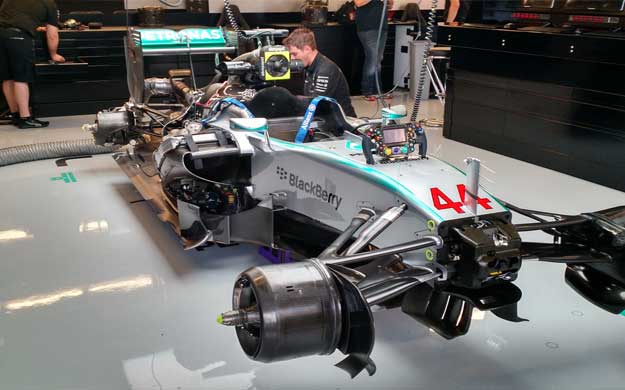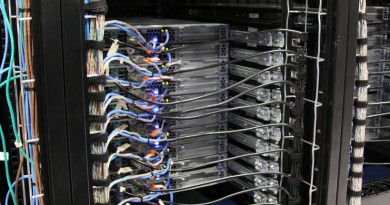F1’s New Data Center
It’s cold and wet for Sunday’s Formula 1 race at Austin, Texas, where the rainfall left over from Hurricane Patricia has led to more than 6 inches of water being dumped on the track. In a sport where rain is seen as the great equalizer where the traditional leaders can end up at the back of the pack for the start of the race, and have to fight their way up to the front, that didn’t happen as the Mercedes team’s two drivers locked in the top spot Sunday morning after a brief qualifying round.
This was after curtailed practice laps on Friday as the rain moved in, and qualifying rounds that were postponed indefinitely on Saturday. As of Sunday morning, the race is still scheduled to start at 2 pm local time, but if rain continues or conditions on the track worsen, the start would be postponed. John Morrison, the CTO of the Formula One Management, said that the race has been canceled only once before in Malaysia when the “water was ankle-deep on the track,” and in that case it wasn’t exactly canceled as it was postponed until it was effectively canceled because the teams had to move out for the next race.
Unfortunately for the F1 organization, the next stop is Mexico City, where the organizers are worried about sparse attendance after the country’s western coast was hit by Patricia. The rain is the big story from this race, but Fortune was there to see behind the scenes, where incredible amounts of data coming from the cars was sent, analyzed and then packaged immediately into a broadcast. Fortunately it was dry. Unfortunately, F1 didn’t allow cameras.
The F1 data center is a grey, steel and plastic temporary structure that sits outside the track and is home to about 200 people during the 3 days of a race. It takes about a two days to set up the structure and the offices and equipment inside it, but only about 3 hours to take it down, where it’s then loaded on 15 trucks and transported to the next race if the race is in Europe, or to the airport if it is in the Americas. In the Americas the gear is loaded onto a jumbo jet and flown to the next race.
In the Austin data center the servers and broadcasting equipment all sat on air pallets so it could easily transition from data center to truck to aircraft and back again. Morrison, the Formula One CTO, said that since each jumbo jet can carry 130 tons, he kept all of the gear under that weight limit to avoid needing to split up the gear and create more logistical drama. So far, he’s managed.
As for why a car race might need its own portable data center with 130 tons of gear, F1 is arguably the most data-driven sport out there. Each car is outfitted with roughly 150 sensors generating about 2,000 data points a minute. For years, the rules for F1 have limited teams in terms of their time in wind tunnels and in the not-so-distant past, their supercomputing hours used. Even today, they are limited in the number of engineers located on site as opposed to those at their offices back home.


